June 2, 2016
It’s 3:00 pm in Puerto Ayora. After several hours answering work emails and various other work projects, Maureen and I are now officially on vacation for the next four days.
In no time at all, we are on our way to the Charles Darwin Research Station and its beach. Not long after we turn left onto the main road heading east to the beach, we pass this piece of street art:
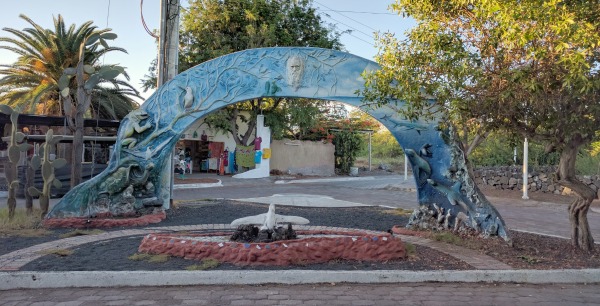
Street art in Puerto Ayora
As we enter the Charles Darwin Research Center property, we’re directed onto a raised red brick sidewalk that runs parallel to the road. We seem to be the only people heading to the beach; everyone else is heading back into town.
The breeze has a cool edge to it, which takes the edge off the afternoon heat. Even though it’s a pleasant walk, we are anxious to see the ocean, and the walk seems to go on forever.
After 15 minutes, we turn onto a small sandy pathway leading through some brush. And there before us is the Playa de La Estación (Beach of the Station).
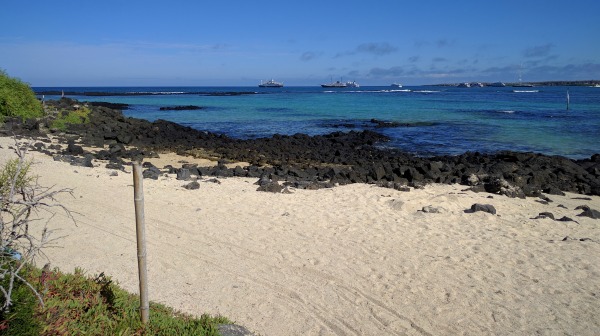
We’ve arrived at the beach!
The black lava rocks that make up most of the beach glisten in the hot afternoon sun.
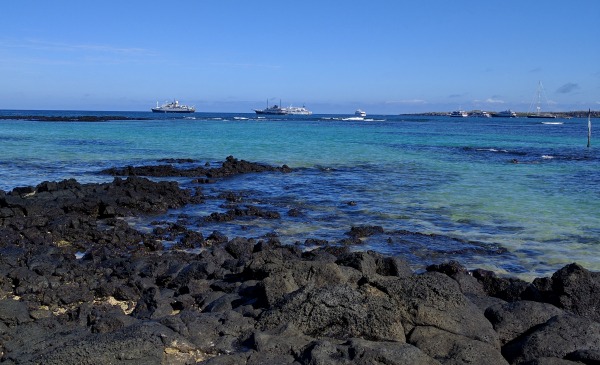
Lava rocks along the turquoise-blue shoreline
When we finally tear our eyes way from the black rocks, deep blue ocean, and turquoise-blue shallower water, we notice that most of the two dozen beach-goers have found a patch of shade or a bower under the low-branched trees.
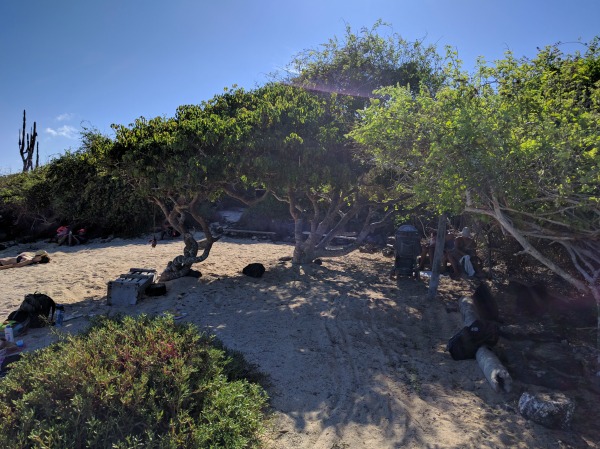
Lots of shade to keep out of the hot afternoon sun.
We claim the first bower we can find . . .
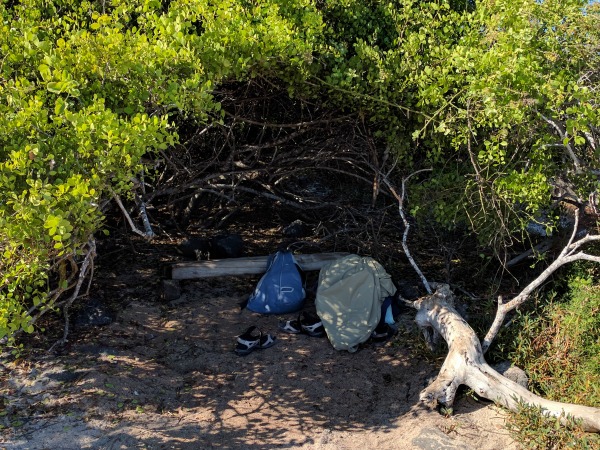
Our very own beach bower!
. . . and set off to explore the rocks and the water.
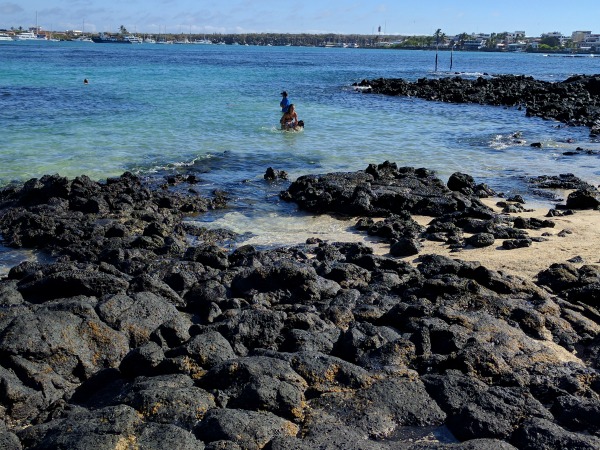
Time to explore!
Over the next hour, we spot dozens of black and red crabs. We see the red crabs first, because they are vibrantly easy to see against the black rocks.
For a long time, the one closest to me is turned away from me. When it finally turns around, I marvel at seeing those powerful front claws in action.
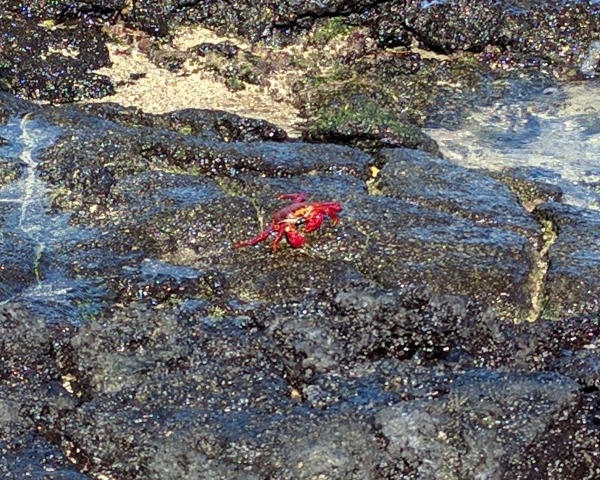
A Sally Lightfoot Crab eats algae off the rocks.
The black crabs (younger ones that haven’t yet turned red) are impossible to find unless they move. They are all over in the rocks, a colony of crabs constantly on the move.
While I’m crab-spotting, this glorious yellow bird comes to say hello.
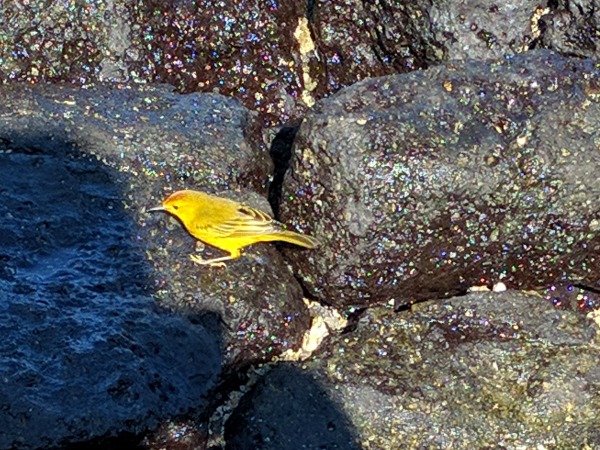
A yellow bird comes to say hello.
Suddenly, I see a pale grey creature further down the beach among the rocks. It’s a marine iguana! He or she is too far away to capture with my smartphone camera.
But over the next 30 minutes, the iguana works its way over the rocks toward us. It seems supremely unconcerned with our presence in its domain. And although Maureen and I are watching with rapt attention, the crabs don’t seem to notice the iguana either.
Finally, the iguana gets close enough for me to zoom in. He’s still about 3 feet away, but up close it’s easy to see his flamage. You’d never see him among the rocks unless you knew where to look.
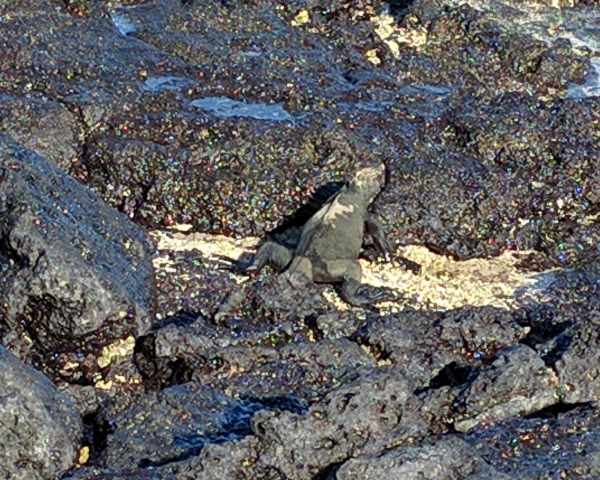
Marine iguana, Galapagos Islands
It’s a satisfying end to our first adventure at Playa de La Estación. With a couple hours of daylight left, we decide to continue down the main road to the research station itself.
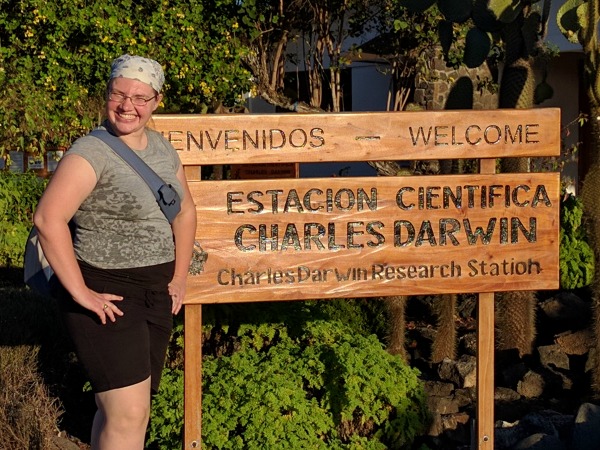
Welcome to the Charles Darwin Research Station
The Charles Darwin Research Station is mostly devoted to scientific endeavors. However, the exhibit hall and turtle breeding center are both open to the public.
I’m tempted to go inside, but the afternoon is just too gorgeous. Several hiking trails branch off from the main research station. We take one of them, which leads us back out to the coast.
There’s no access to the ocean, but the views of small alcoves with rock-littered beaches and brilliant green headlands is extraordinary.
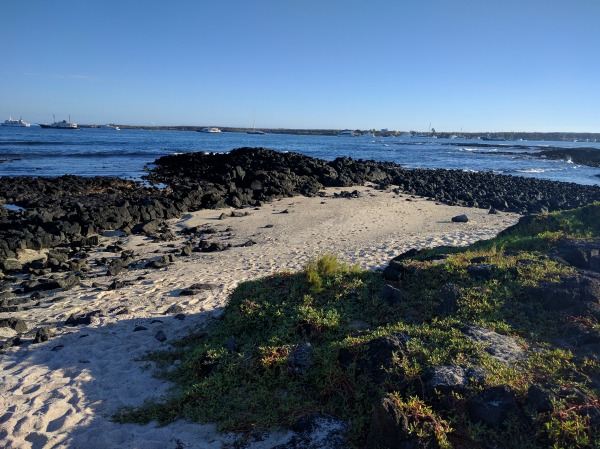
A particularly picturesque rock-littered beach.
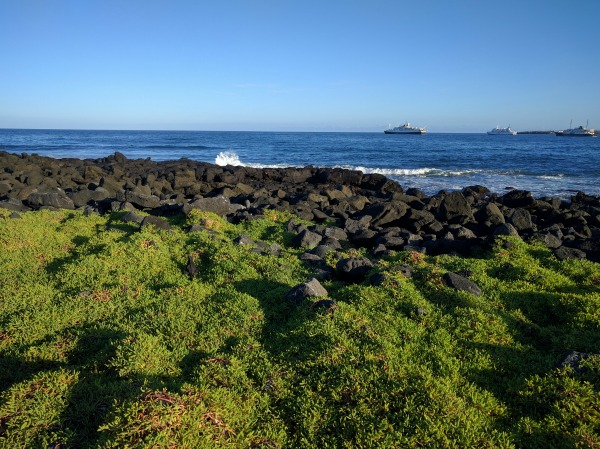
A study in contrasts: brilliant green ground cover, black rocks, and blue ocean.
The path ends in a tumble of lava rocks. Ahead is a bay, with a tantalizing sweep of beach across a field of lava rocks. Suddenly an iguana moves on the rocks in front of us. It’s a young one, less than a foot long. Now that we see one, we can see see half a dozen young ones, all perched on their own lava boulder.
We watch the babies for a few minutes. They move much faster than their older counterparts, and seem much more interested in moving around at all. The older ones we’ve seen along the trail seem content to simply hang out in the sunshine.
At last we turn for home, retracing our steps across the coastal path.
But there’s one more treat in store: a marine iguana less than two feet from the path! He or she stares at us as we take its picture.
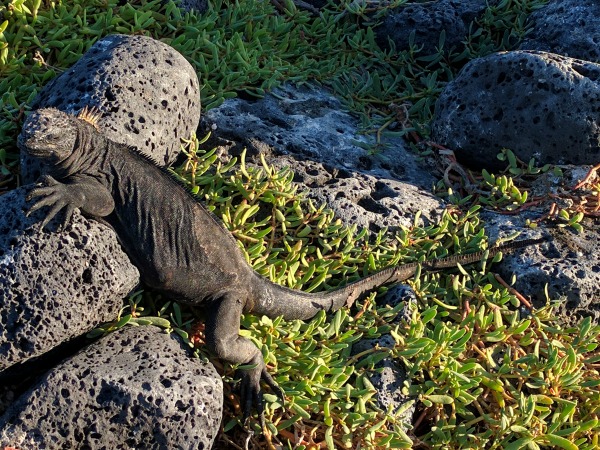
Marine Iguana, Galapagos
This iguana is about two feet long. Its body, tail, and feet instantly bring to mind images of dinosaurs, a triceratops in particular. And yet, its face is surprisingly human. It seems to stare at us with amused boredom, as if used to having its picture taken by enthusiastic tourists.
The Charles Darwin Research Station is closing down as we trek through. After being immersed in natural and wildlife beauty, my eye is drawn to the “official vehicle” sign on a bike parked outside the station . . .

“Official vehicle.”
. . . and this tiny electric car / golf cart parked out back.
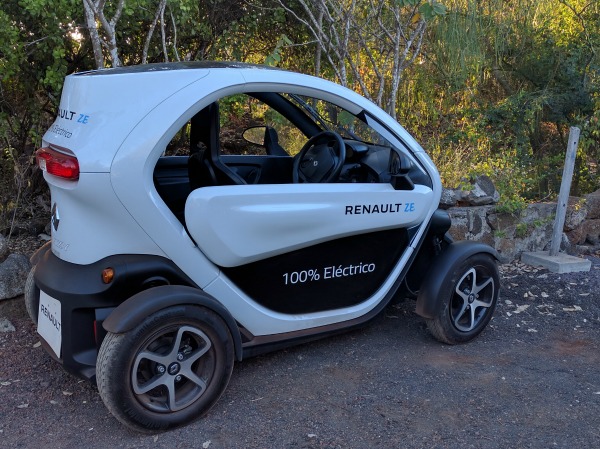
Is it a smart car? Is it a golf cart?
Our final interaction of the day is with this bird, who stops to chat with us for several minutes before we leave the station behind.
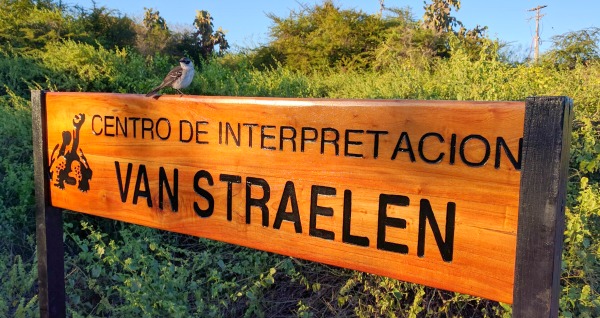
A very chatty bird.
It’s been a delightful afternoon, and Maureen and I are very excited for the weekend to come. Tomorrow we’ll start figuring out what islands we want to visit, and make plans for our four-day weekend.

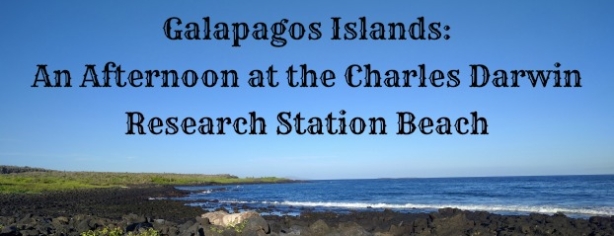









‘always interested in anticipations vs. observations & impressions…
The “yellow bird” is an adult male yellow warbler — the 2nd bird appears to be a variation of Darwin’s Finch.
Primeval Andes? Actually one of the world’s younger mountain ranges, only 3x older than the Teton Range (8 million years old)…
‘sounds both educational and relaxing — a nice way to “flee the country” (for tax breaks!).